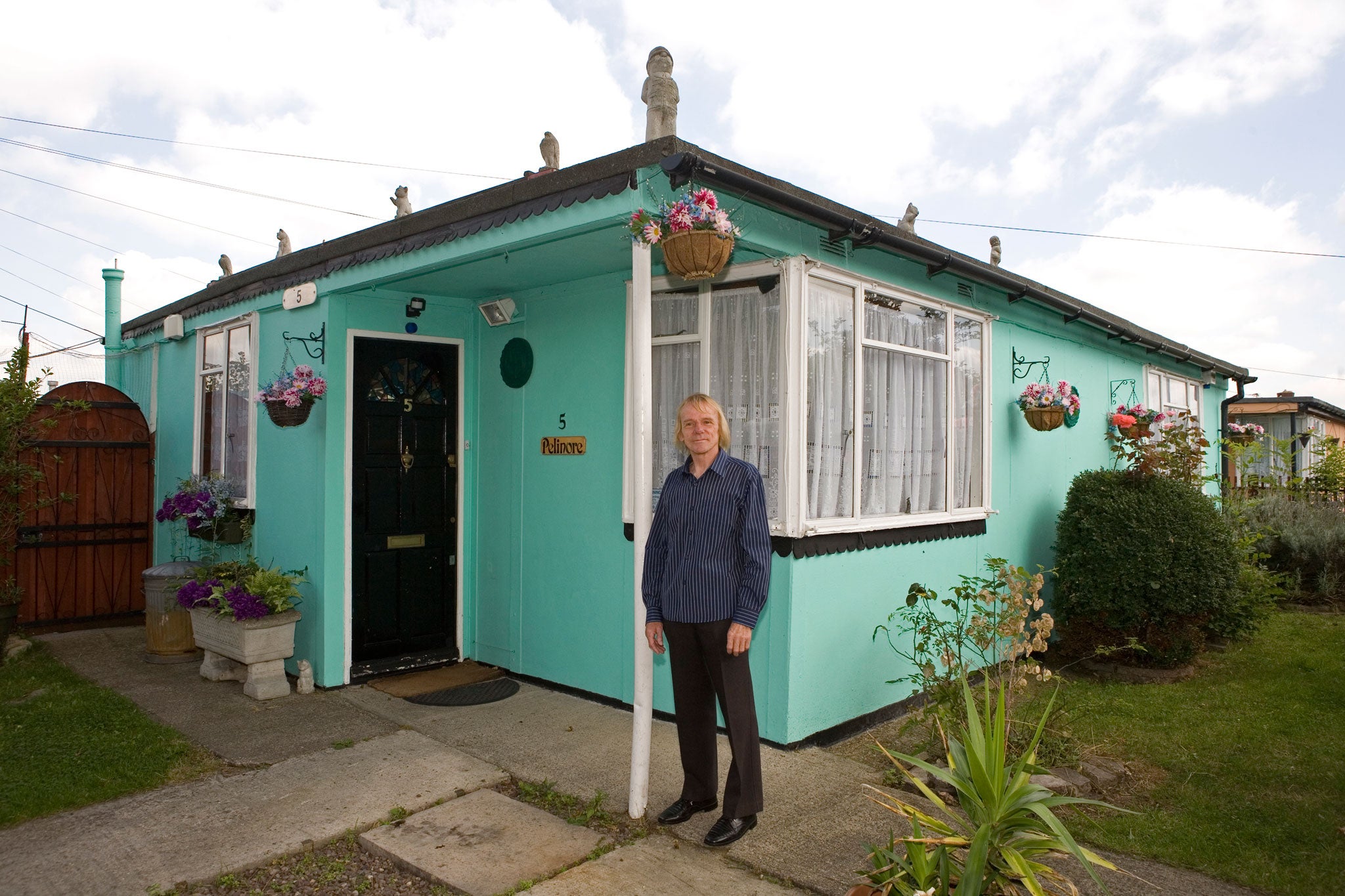Prefabs in peril: Britain's largest remaining estate of the postwar homes is under threat
They were built to last only 10 years. Seven decades on, the 187 homes of Britain's largest remaining prefab estate stand strong. But now the local council is set on demolition – so one photographer has given the residents the least their extraordinary homes deserve: a museum

Your support helps us to tell the story
From reproductive rights to climate change to Big Tech, The Independent is on the ground when the story is developing. Whether it's investigating the financials of Elon Musk's pro-Trump PAC or producing our latest documentary, 'The A Word', which shines a light on the American women fighting for reproductive rights, we know how important it is to parse out the facts from the messaging.
At such a critical moment in US history, we need reporters on the ground. Your donation allows us to keep sending journalists to speak to both sides of the story.
The Independent is trusted by Americans across the entire political spectrum. And unlike many other quality news outlets, we choose not to lock Americans out of our reporting and analysis with paywalls. We believe quality journalism should be available to everyone, paid for by those who can afford it.
Your support makes all the difference.Eddie and Max fought on opposite sides during the Second World War but you could say they share a house. Eddie, a 94-year-old Englishman, lives in it. But 70 years ago it was Max, a German POW at the time, who put the place together, along with the 186 other prefabricated homes – or "prefabs" – that make up the Excalibur Estate in south London. For a while in 2008 Eddie and Max corresponded, but they lost touch – until on Eddie's birthday last year, a photographer found a way for Eddie to send Max another note. The letter read, simply: "Thank you for the home."
"It was a nice thing. He is always telling me the Germans did a good job", says that photographer, Elisabeth Blanchet, who speeds through the story in English that lilts to a French cadence.
She thinks Eddie has a point. For 12 years, Blanchet has travelled to prefab estates around Britain, taking pictures of the modular homes and their owners. There aren't many left: 160,000 were thrown up in a hurry after the Blitz, and expected to last a decade. Long past that lifespan, a sword now hangs over the Excalibur. Lewisham Council plans to demolish the prefabs and build new homes. Eddie and a few neighbours cling on. After five years of struggle to preserve their way of life, there is at last cause for celebration; a prefab museum, curated by Blanchet, opened yesterday.
The homes aren't so fine as they were in 1946, when the Excalibur was finished. On those left derelict, paintwork has peeled, litter settled in grass. Some lampposts don't work at night. But those still occupied remain spruce, and, says Blanchet, are "almost like an ideal home from a child's drawing. I like their simple design," she adds, "the almost-flat roofs, the corner window, the little garden. There's a feeling of cosiness."
Born in 1970 in Normandy – in a town house – Blanchet moved to England for work, and found her outsider status encouraged tightknit communities to loosen up in front of the camera. "Being from another nationality, people will let you more into their home. They can't see from my accent if I'm posh or not," she says. "Also, it's a bit exotic: why does a French person have so much interest in prefabs?"
The answer involves the people who inhabit the Excalibur as much as the houses they live in. Subjects have become friends. "A lot of residents are really nice and don't want to leave, so it's natural to be on their side," says Blanchet.
A bitter aside from former resident Jim Blackender, who campaigned without success against the Excalibur's redevelopment in 2010, gave Blanchet further motivation."'He told me, 'There is no museum for the poor, nor for the working class.' That idea got into my head."
At the dawn of Blanchet's quest to record life in Britain's prefabs – a journey which has led her from Derbyshire to Stornoway, Chesterfield to Newport – she was the only person taking an interest. Today, English Heritage is involved, and six Excalibur homes have received Grade-II listings, so will sit – squat and cheerful – next to any new apartment blocks that spring up.
Once again, London is cramping from a shortage of homes. Prefabs hog too much land to help. But they can put the current crisis in context. Blanchet has invited schools to the museum so that pupils can see that – once upon a time, in social housing – "you could live all your life in a place that looks like a holiday village".
Naturally, a prefab will house the exhibition itself. Residents have offered Blanchet trinkets and memorabilia to display alongside her photographs, and there will be work from nine other artists. Like the prefabs, the museum is slated to last just a short while. But doggedness got these homes, and Blanchet, this far, and she hopes it will take them further still. "Prefabs were meant to be temporary," she says. "But they survived. So I hope my temporary museum will too."
The Prefab Museum is at 17 Meliot Road, London SE6, to 1 April
Join our commenting forum
Join thought-provoking conversations, follow other Independent readers and see their replies
Comments